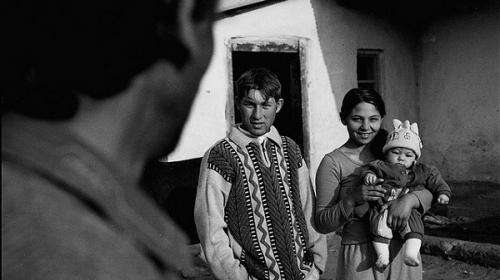Romani research reveals cause for inherited condition

UWA researchers have helped identify the most common cause of congenital lactic acidosis in Roma patients, which could have wide-ranging implications in Australian settings.
Roma people, or Romani people, are an ethnic minority across Europe and make up nearly five per cent of the Bulgarian population.
Lactic acidosis is characterised by low pH in body tissues and blood and build up of lactate, which causes a host of symptoms including tachycardia, nausea and abdominal pain.
The recently published study demonstrates homozygosity (when identical alleles of a gene are present on both homologous chromosomes, which is a set of one maternal chromosome and one paternal chromosome pairing with each other during meiosis) for the R446* mutation in the PDHX gene.
According to the research, this single ancestral mutation of R446* in the PDHX gene accounts for more than 60 per cent of congenital lactic acidosis cases.
UWA Centre for Medical Research's Dr Dimitar Azmanov says the study provides invaluable clinical information on a rare metabolic disorder to the wider community of health professionals.
"We have characterised the largest homogeneous patient group with lactic acidosis due to a founder mutation in one of the genes important for mitochondrial metabolism, PDHX," Dr Azmanov says.
"As mitochondrial disorders may affect 100,000 Australians, our research has direct medical implications considering the difficulties in the establishment of a diagnosis."
The study was undertaken in collaboration with more than two dozen Australian and European researchers, however, UWA has considerable interest in the research.
"Many genetic disorders are a serious health burden in childhood, and the identification of the underlying cause through studies of the Roma isolate has broader implications for patient diagnosis, individualised management and prevention of recurrence in the affected families with the same disorder worldwide," Dr Azmanov says.
Infant screening needed
The study authors call for testing for the R446* mutation in PDHX as a rapid first screening in Roma infants with the condition, to speed up diagnosis and alleviate chronic symptoms.
The study included 56 participants from 23 nuclear Roma families from Bulgaria, comprising of 31 individuals with diagnosed or suspected congenital lactic acidosis and 25 healthy relatives.
While the cohort is small, Dr Azmanov says the relative isolation of the Roma people from surrounding populations means that the study has "been fruitful" due to the limited genetic diversity.
More information: Ivan S. Ivanov, Dimitar N. Azmanov, Mariya B. Ivanova, Teodora Chamova, Ilyana H. Pacheva, Margarita V. Panova, Sharon Song, Bharti Morar, Ralitsa V. Yordanova, Fani K. Galabova, Iglika G. Sotkova, Alexandar J. Linev, Stoyan Bitchev, Anne-Marie J. Shearwood, Dalia Kancheva, Dana Gabrikova, Veronika Karcagi, Velina Guergueltcheva, Ina E. Geneva, Veneta Bozhinova, Vili K. Stoyanova, Ivo Kremensky, Albena Jordanova, Aleksey Savov, Rita Horvath, Matthew A. Brown, Ivailo Tournev, Aleksandra Filipovska, Luba Kalaydjieva, "Founder p.Arg 446* mutation in the PDHX gene explains over half of cases with congenital lactic acidosis in Roma children," Molecular Genetics and Metabolism, Available online 21 July 2014, ISSN 1096-7192, dx.doi.org/10.1016/j.ymgme.2014.07.017.














